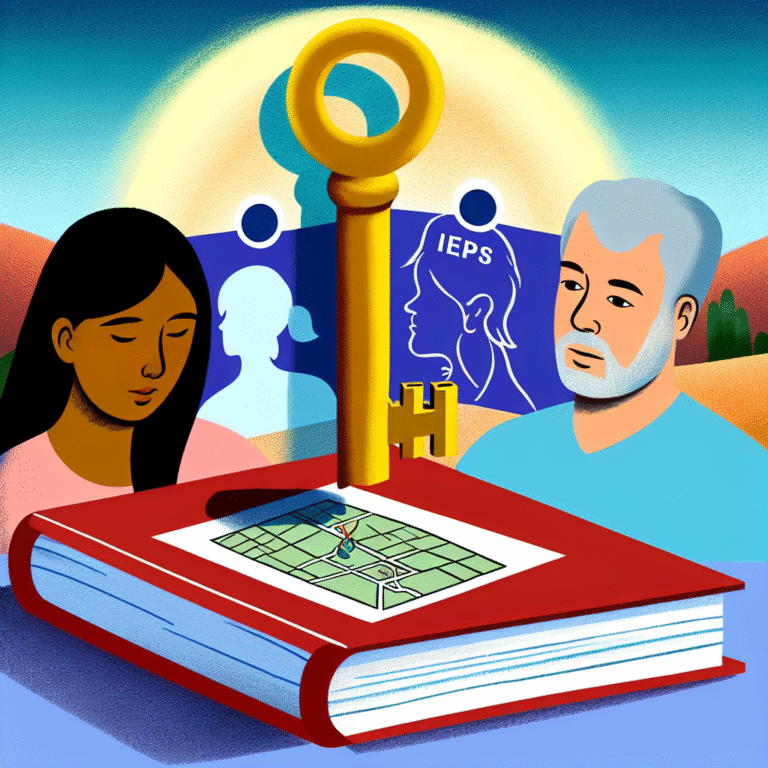
Introduction
Imagine walking into a workplace buzzing with energy, where employees from diverse backgrounds and abilities thrive together. What if I told you that fostering such an environment is not just about adhering to regulations or ticking boxes, but it’s a gateway to unparalleled productivity, creativity, and business success? In today’s rapidly evolving work landscape, the concept of "Beyond Compliance: The Business Case for Workplace Accommodations" has emerged as a beacon for organizations aiming not just to meet legal obligations but to create inclusive cultures that flourish.
The need for workplace accommodations goes far beyond mere compliance. Understanding the substantial benefits that come with it—such as improved employee morale, enhanced talent retention, and even increased innovation—can transform your organization. This in-depth exploration will unpack these advantages while providing actionable insights to cultivate a thriving workplace where everyone can succeed.
The Shift from Compliance to Inclusivity
Understanding Compliance
Workplace accommodations often begin with compliance—meeting the standards set by laws like the Americans with Disabilities Act (ADA). While fulfilling these legal obligations is essential, equating accommodations solely with compliance can limit an organization’s outlook. Compliance is merely the starting point; to unlock the full potential of workplace accommodations, companies must embrace a more expansive view that values inclusion.
Why Beyond Compliance?
Going "beyond compliance" involves understanding that accommodations are beneficial not only for employees with disabilities but for the entire organization. By fostering an environment of acceptance and support, companies can improve their public image, attract a wider talent pool, and boost employee satisfaction.
The Business Case for Workplace Accommodations
Employees as Assets
Enhancing Employee Retention and Productivity
Employees are a company’s most valuable assets. Numerous studies indicate that organizations offering accommodations see higher retention rates. For instance, a study by the Job Accommodation Network (JAN) reported that 56% of employers who made accommodations noted a return on investment within a year, often through increased productivity.
Case Study: Salesforce’s Commitment to Inclusion
Salesforce, a leading cloud-based software company, has embedded accommodations into its culture. Employing individuals with disabilities and offering tailored support not only enhanced their employee retention rates but also resulted in innovative solutions that boosted product diversity and market reach.
| Metric | Before Accommodations | After Accommodations |
|---|---|---|
| Employee Retention Rate | 75% | 90% |
| Productivity Increase | 10% | 25% |
Unlocking Diverse Talent
The Power of Diversity
Creating inclusive workplaces is vital for attracting a diverse talent pool. By implementing effective workplace accommodations, organizations can tap into the unique perspectives and experiences of individuals with various abilities. This diversity drives creativity and innovation.
Case Study: Accenture’s Diverse Workforce
Accenture has established a successful diversity program, incorporating accommodations that allow employees to realize their full potential. Their initiatives have seen a 30% increase in innovative product development, demonstrating the vast contributions that a diverse workforce can make.
The Ripple Effect of Inclusivity
Innovation and Competitive Advantage
Fuelling Creativity
When organizations support their employees through effective accommodations, they foster an environment where creative ideas flourish. This can provide a significant competitive advantage in today’s fast-paced market.
Case Study: Google’s Innovative Work Environment
Google’s investment in ergonomic designs and flexible work accommodations shows how inclusivity leads to groundbreaking advancements. Their successful product launches are often credited to the diverse teams formed through their commitment to workplace accommodations.
Employee Engagement and Morale
A Happy Workforce is a Productive Workforce
Employees who feel supported and appreciated are more likely to be engaged and motivated. Effective workplace accommodations can boost morale, resulting in lower absenteeism and a more enthusiastic workplace atmosphere.
Case Study: Microsoft’s Employee-Centric Culture
Microsoft offers various accommodations ranging from flexible working hours to assistive technologies. Their commitment to a supportive workplace culture has led to consistently high employee satisfaction scores, illustrating the direct correlation between accommodations and employee happiness.
Implementing Effective Workplace Accommodations
Steps to Create an Inclusive Workplace
- Conduct an Assessment: Evaluate current practices and identify areas for improvement.
- Involve Employees in the Process: Encourage feedback and input from staff, especially those who may require accommodations.
- Develop Clear Policies: Ensure that there are transparent policies on how accommodations can be requested and provided.
- Train Staff: Provide training on the importance of inclusivity and how to support colleagues with various needs.
Conclusion
The journey to inclusivity and support within the workplace is not just about meeting legal standards; it’s about harnessing the collective power of a diverse workforce. Organizations that embrace the philosophy of "Beyond Compliance: The Business Case for Workplace Accommodations" will not only prosper but also inspire others in their commitment to create happy, productive, and innovative work environments. By understanding the profound impact of accommodations, companies can cultivate an atmosphere that values every employee’s contribution, ultimately leading to remarkable business success.
Takeaway
If you’re in the position to make decisions at your organization, consider the various ways workplace accommodations can transform your culture. Start today—your employees, your company, and your bottom line will thank you.
FAQs
1. What types of workplace accommodations are commonly provided?
Common types of accommodations include flexible work hours, modified job duties, assistive technology, and ergonomic workstations.
2. Are workplace accommodations expensive?
Many accommodations are low-cost or even free; in fact, a significant portion of accommodations typically pays for itself through increased productivity and reduced turnover.
3. How do I encourage employees to request accommodations?
Creating a culture where employees feel safe and valued is crucial. Consider open forums, anonymous surveys, and regular check-ins to ensure all employees know they have support.
4. What if the requested accommodation seems unreasonable?
Employers should engage in an interactive dialogue to explore alternatives that can provide support while maintaining workplace functionality.
5. Are there legal repercussions for failing to provide accommodations?
Yes, failing to comply with laws like the ADA can lead to lawsuits, fines, and damage to reputation. Beyond legal concerns, it’s vital for fostering an inclusive and supportive culture.
By exploring the intricate dynamics of workplace accommodations, it becomes clear that the business case extends far beyond compliance—the benefits are profound and far-reaching. Commit today to go beyond simply meeting obligations and reap the transformative rewards waiting for you.














